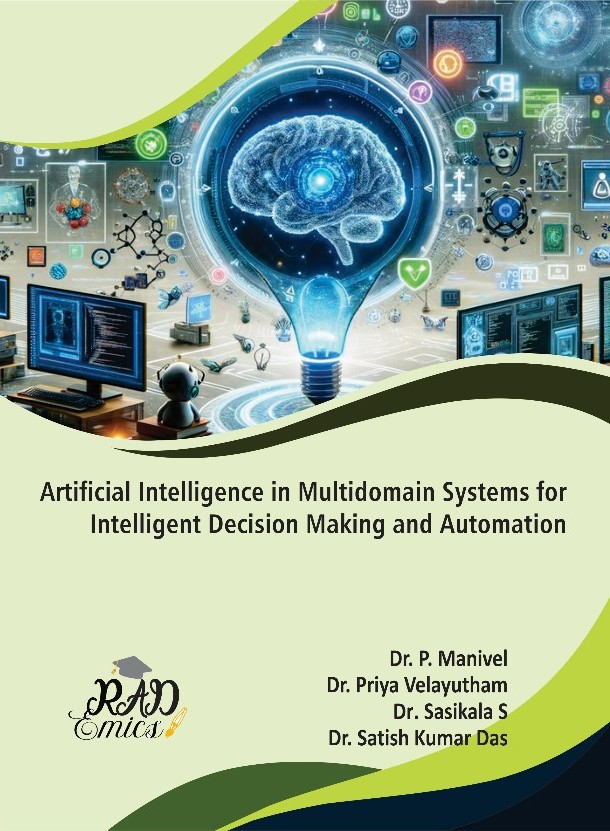
Abstract
The evolution of intelligent autonomous systems has been significantly influenced by advancements in reinforcement learning (RL), particularly in the context of robotic navigation and control. This chapter explores state-of-the-art reinforcement learning techniques and their integration into multi-agent robotic systems and unmanned aerial vehicles (UAVs), focusing on complex tasks such as dynamic path planning, obstacle avoidance, real-time control, and decentralized decision-making. Emphasis is placed on the challenges associated with partial observability, high-dimensional action spaces, sample inefficiency, and the sim-to-real transfer gap. The role of deep reinforcement learning (DRL), multi-agent reinforcement learning (MARL), and hybrid learning architectures is examined in enabling robust, adaptive, and scalable behavior across heterogeneous robotic platforms. Special attention is given to cooperative control in UAV swarms, communication-limited environments, adaptive role allocation, and autonomous coordination in disaster response and infrastructure inspection scenarios. Simulation platforms, performance benchmarks, and emerging frameworks for safety, explainability, and energy efficiency are critically analyzed. By presenting a comprehensive synthesis of theoretical models, algorithmic advances, and practical applications, this chapter provides a foundational reference for researchers and practitioners seeking to develop resilient and intelligent autonomous navigation systems.
Introduction
The growing reliance on autonomous systems in complex real-world environments has catalyzed significant research into intelligent control methodologies capable of adapting to dynamic conditions and unstructured settings [1]. Conventional model-based control strategies, while effective under predictable conditions, often falter when deployed in environments characterized by uncertainty, non-linearity, and variability [2]. Reinforcement Learning (RL), as a branch of machine learning focused on sequential decision-making, has emerged as a transformative approach for enabling autonomous agents—such as robots and unmanned aerial vehicles (UAVs)—to learn optimal control policies through interaction with the environment [3]. Unlike supervised learning, RL does not require labeled input-output pairs; instead, it relies on reward signals that reinforce desirable behavior, allowing the agent to discover effective strategies through exploration [4]. This paradigm is particularly well-suited to autonomous navigation and control tasks, where predefined rules may be insufficient or infeasible due to the stochastic nature of the environment [5].
The application of RL to robotics and drone control has expanded rapidly with the integration of deep learning, resulting in Deep Reinforcement Learning (DRL) models capable of processing high-dimensional sensory inputs and learning from complex, unstructured data [6]. These models have demonstrated significant potential in tasks such as obstacle avoidance, dynamic path planning, trajectory optimization, and fine-grained motion control [7]. Reinforcement learning has also shown promise in multi-agent systems, where decentralized agents must cooperate or compete to achieve individual or collective goals [8]. The coordination of UAV swarms and robotic collectives through multi-agent reinforcement learning (MARL) presents novel possibilities in areas such as disaster response, surveillance, and collaborative mapping [9]. The high-dimensional state and action spaces, sparse rewards, and unstable training dynamics pose substantial challenges that must be addressed to realize the full potential of RL in real-world autonomous systems [10].